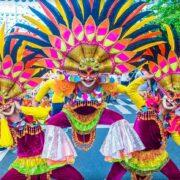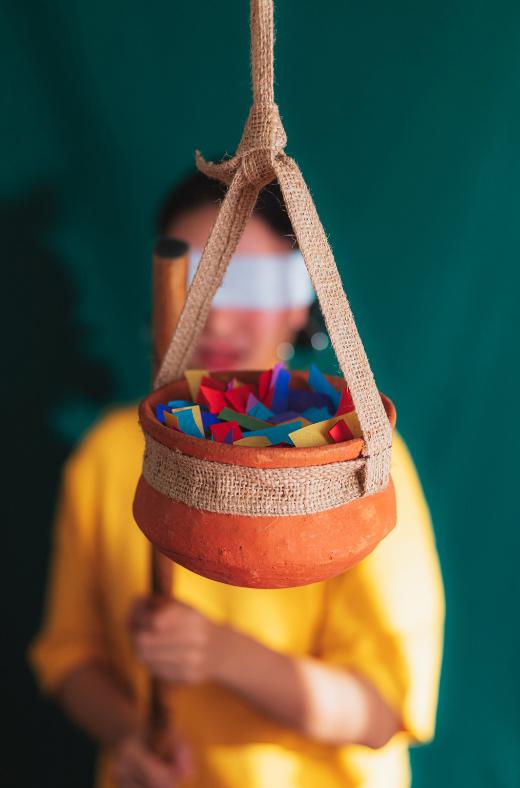
The Philippines boasts a vibrant and varied past when it comes to its festivals, which serve as a testament to the nation’s cultural legacy, religious beliefs, and societal norms. Throughout the centuries, religious and cultural elements have given rise to the distinctive nature of fiestas as we know them today.
The roots of these celebrations can be traced back to the pre-colonial era, where indigenous communities would come together to pay homage to their deities, commemorate bountiful harvests, and mark significant milestones.
These ceremonial gatherings were closely tied to the agricultural cycles, encompassing activities like planting and harvesting, as well as important communal occasions. The indigenous populace expressed their reverence towards their deities and spirits through the mediums of music, dance, feasting, and other customary customs. These celebratory events held immense significance in preserving their cultural heritage and fostering a sense of unity among the community.
However, with the arrival of colonizers from Spain during the 16th century, these indigenous festivities underwent a transformation as they became intertwined with Catholic religious practices.
In their mission to evangelize the indigenous population, Spanish missionaries introduced Catholicism, which had a profound impact as consequence. They actively encouraged the integration of Catholic religious themes into local festivities, with the primary objective of facilitating the conversion of indigenous peoples to Christianity. This transformative process led to the evolution of traditional celebrations into religious fiestas that revolved around Catholic saints and religious events.
Over time, Philippine fiestas have become elaborate and vibrant affairs that blend religious reverence with cultural expressions. Typically, each town or barrio has its own patron saint, and the commemoration of their feast day is marked with great fervor. The preparations for these fiestas often entail months of meticulous planning and coordination among members of the community.
Festivities during these occasions often include processions, street parades, beauty pageants, traditional games, musical and dance performances, as well as an abundance of feasting. The festive atmosphere serves as a unifying element, bringing together both residents and visitors, and fostering a profound sense of unity and camaraderie within the community.
The religious significance plays a central role in fiestas celebrated across the country. These vibrant festivities are dedicated to venerating a patron saint or a momentous religious occurrence. The commencement involves a mass or religious procession, where the entire community congregates to showcase their profound faith and devotion.
As the celebrations unfold, the streets come alive with a riot of colors and sounds.
Colorful decorations like banderitas, flowers, and lights, adorn homes, streets, and public spaces and infuse the atmosphere with a festive spirit, creating a joyous ambiance that spreads throughout the entire neighborhood.
Traditional dances and elaborate costumes add a touch of grandeur to the spectacle as participants take the stage, their performances become a reflection of their community’s customs and traditions, showcasing their talents with pride. To add to the festive fervor, street dancing competitions, beauty pageants, and cultural presentations take place, immersing everyone in the exhuberance.
Traditional feasts are a sight to behold during a fiesta. The air is filled with the aroma of mouthwatering dishes, meticulously prepared and generously shared among family, friends, neighbors, and even strangers. From the succulent Lechon to the flavorful pancit, the staple adobo, and the assortment of delectable kakanin, these dishes are the stars of every fiesta. This cherished tradition not only boasts the spirit of hospitality and generosity but also allows families to showcase their culinary expertise with pride.
Fiesta have confronted challenges linked to evolving societal dynamics, environmental concerns, and economic pressures. In response, communities have adapted by integrating sustainable practices into their celebrations, promoting responsible tourism, and utilizing digital platforms to engage a wider audience. Furthermore, endeavors have been made to ensure inclusivity and diversity within fiesta festivities by embracing various cultural expressions and fostering intercultural dialogue.
Today, fiestas serve as platforms for expressing appreciation, fostering social connections, and displaying regional customs. They create avenues for economic endeavors by drawing tourists and invigorating local enterprises. Furthermore, the fiesta serves as a means of transmitting cultural values from one generation to another while adapting to contemporary realities.
Allow us to give you an exlusive tour of some of the biggest and most colorful fiestas happening in the country throughout the year.
Feast of the Black Nazarene
In the Philippines, particularly in Manila, the Feast of the Black Nazarene is a momentous religious occasion that draws millions of faithful believers who actively engage in a grand procession to venerate the revered image of the Black Nazarene. This religious festival is deeply embedded in the fabric of Filipino Catholicism and is commemorated annually on January 9th.
The Black Nazarene’s roots can be traced back to the early 17th century, when a life-sized statue of Jesus, carrying the cross, was transported to Manila by Augustinian Recollect friars from Mexico. This statue is widely believed to possess extraordinary powers, and its darkened appearance is attributed to centuries of exposure to the smoke of burning candles.
Filipino Catholics exhibit unwavering dedication to the Black Nazarene, firmly believing in its extraordinary power to cure ailments and fulfill their prayers. The Traslacion, an annual event, entails devotees pulling a carriage carrying the sacred statue along the streets of Manila. In their ardent desire to touch or approach the image, participants frequently put themselves at risk of harm or even fatality.
This celebration represents the essence of faith, sacrifice, and camaraderie among its followers. It serves as a compelling testament to the depth of devotion and religious fervor, as devotees willingly endure physical hardships during the procession as a way to seek forgiveness or express gratitude for prayers that have been answered.
Ati-Atihan Festival

The Ati-Atihan Festival is held in Kalibo, Aklan and is often referred to as the “Mother of All Philippine Festivals.” It is a week-long celebration featuring tribal dance performances, vibrant costumes, and a reenactment of the arrival of Malay chieftain Datu Puti and his people to Panay Island. The festival culminates in a grand parade where participants paint their faces with black soot to resemble the Ati, the indigenous people of Panay.
The origins of the Ati-Atihan Festival can be traced back to the 13th century when Malay chieftain Datu Puti and his followers fled from Borneo and sought refuge in the island of Panay. According to legend, the Ati people, who were the original inhabitants of the island, welcomed them by offering food, drinks, and gifts. In gratitude, Datu Puti’s people held a feast to celebrate their new-found friendship with the Ati. This event is believed to be the precursor of the modern-day Ati-Atihan Festival.
The Ati-Atihan Festival plays a significant role in boosting tourism and stimulating economic activity in Kalibo and its surrounding areas. Hotels, restaurants, souvenir shops, and local businesses experience increased patronage during this period. Additionally, artisans and craftsmen benefit from selling traditional handicrafts and souvenirs to festival-goers.
Sinulog Festival

The Sinulog Festival takes place in Cebu City and is one of the most famous religious and cultural events in the Philippines. It honors the Santo Niño (Child Jesus) and features a street parade with participants in colorful costumes dancing to the rhythm of drums. The festival also includes a fluvial procession, solemn processions, and various cultural shows.
One of the primary reasons for the large attendance at the Sinulog Festival is its religious significance. The festival is deeply rooted in Catholicism and is a celebration of the arrival of Christianity in the Philippines. The main highlight of the festival is the street parade, where participants dressed in vibrant costumes dance and chant to honor the Santo Niño. For devout Catholics, attending the festival is a way to express their faith and devotion to the Santo Niño.
The festival has become a major tourism draw for Cebu City and the Philippines as a whole. The lively atmosphere, colorful parades, and energetic performances make it an attractive destination for travelers seeking entertainment and excitement. Many attendees are drawn to the festive ambiance and the opportunity to witness a grand spectacle that combines religious devotion with vibrant celebrations.
The Sinulog Festival is not just a spectator event; it also encourages active participation from both locals and visitors. Various contingents from different parts of the country join the street parade, adding to the diversity and vibrancy of the celebration. This sense of community involvement creates a welcoming environment that fosters unity and camaraderie among participants and spectators alike.
Dinagyang Festival
Held in Iloilo City, the Dinagyang Festival is a religious and cultural event that pays homage to the Santo Niño. It features street dancing characterized by energetic choreography and showcases the rich heritage of the region’s indigenous people. The festival also includes a fluvial procession along the Iloilo River and a religious sadsad (dance) at the San Jose de Placer Church.
Vibrant Performances: One of the main highlights of the Dinagyang Festival is the spectacular street dancing competition. Dancers adorned in colorful costumes perform intricate choreography to the beat of traditional music, creating a mesmerizing display of talent and artistry. The energy and enthusiasm of the performers are infectious, making it a truly captivating experience for spectators.
Religious Significance: The festival’s roots are deeply tied to religious devotion, as it pays homage to the Santo Niño. For those interested in religious and spiritual experiences, attending the Dinagyang Festival provides an opportunity to witness fervent displays of faith and devotion. The religious processions and rituals add a profound layer of meaning to the festivities.
Community Engagement: The Dinagyang Festival brings together people from all walks of life, creating a sense of unity and community spirit. By participating in the celebrations, attendees can interact with locals, partake in traditional cuisine, and engage in various cultural activities. This fosters a sense of connection and understanding between visitors and the local community.
Panagbenga Festival
The Panagbenga Festival, also known as the Baguio Flower Festival, is celebrated in Baguio City. It is a month-long event that highlights floral floats, street dancing, and vibrant cultural performances. The festival aims to showcase the blooming flowers of the region while promoting environmental awareness and preservation.
The festival’s name, “Panagbenga,” translates to “season of blooming” in the local Kankanaey language, and it aptly reflects the abundance of vibrant blooms that adorn the city during the event. Baguio City is renowned for its cool climate and fertile soil, making it an ideal environment for a wide array of flowers to thrive. During the festival, intricate flower arrangements, garden landscapes, and floral floats take center stage, creating a breathtaking spectacle of colors and fragrances. For nature enthusiasts and photography aficionados, the Panagbenga Festival offers an unparalleled opportunity to revel in the beauty of nature’s bounty.
The Panagbenga Festival serves as a significant platform for promoting tourism and driving economic growth in Baguio City and its surrounding areas. The influx of visitors during the festival period stimulates various sectors such as hospitality, transportation, retail, and local businesses. Additionally, by showcasing the city’s natural beauty and cultural heritage, the festival contributes to raising awareness about Baguio as a premier tourist destination in the Philippines.
Moriones






